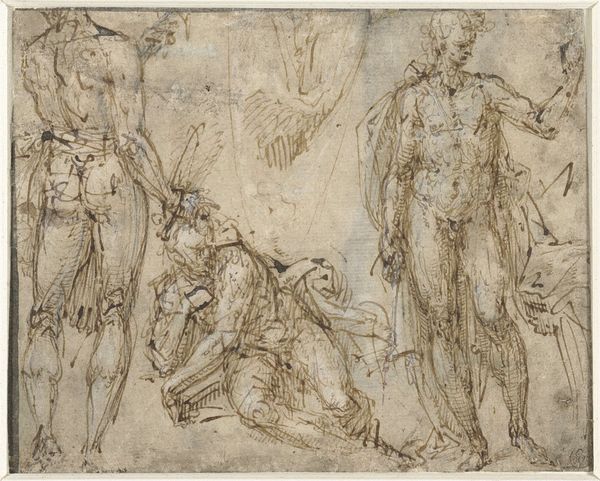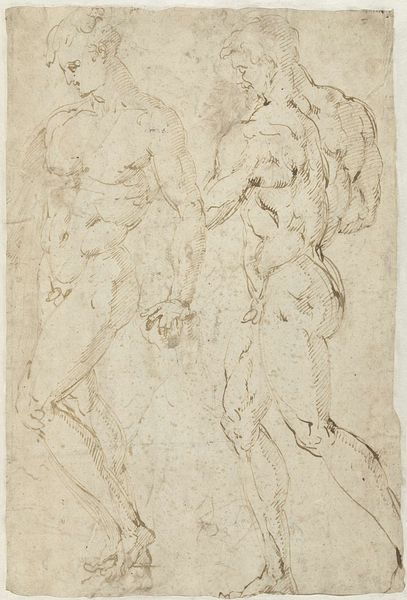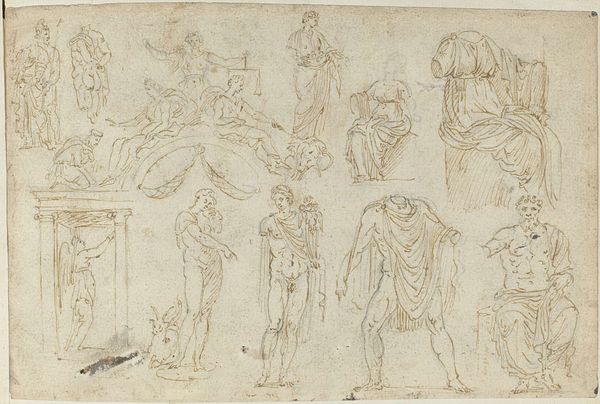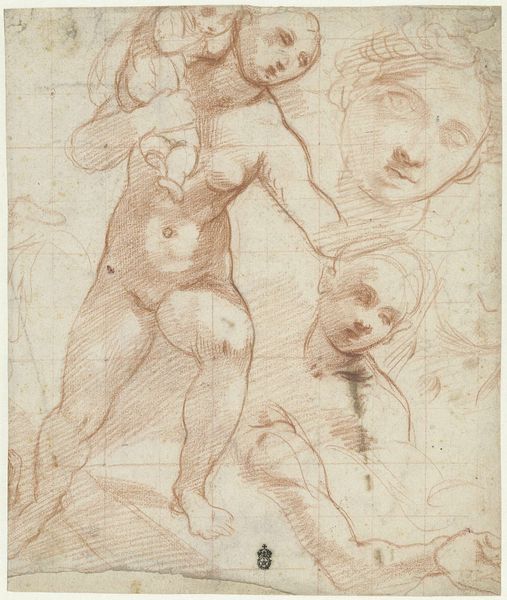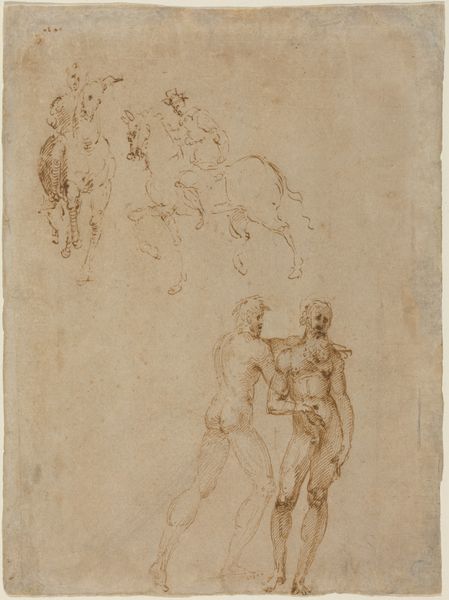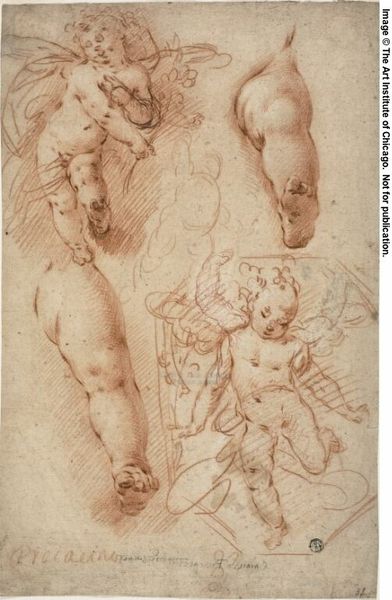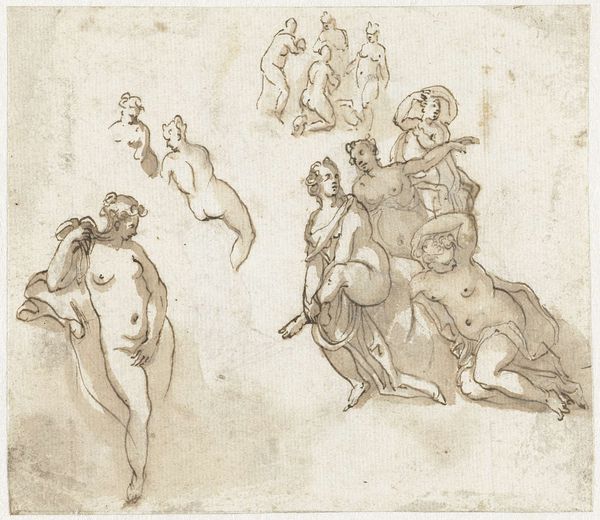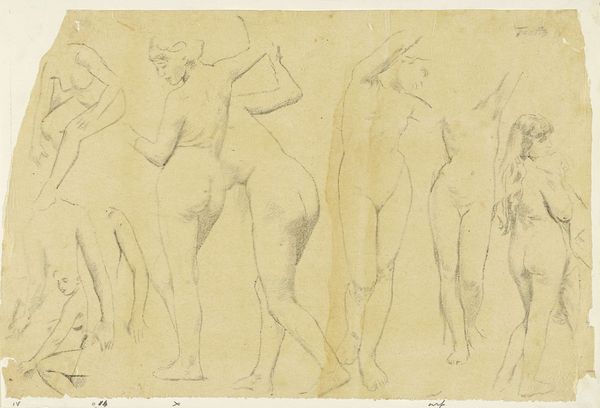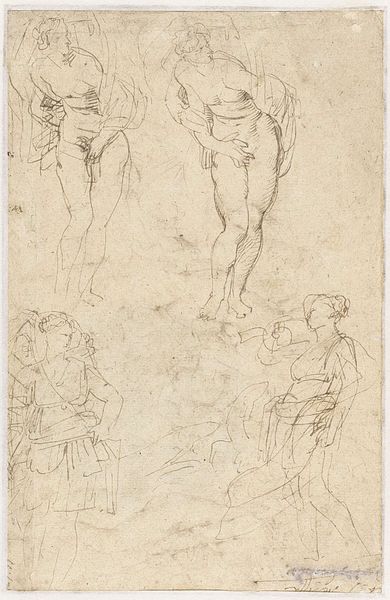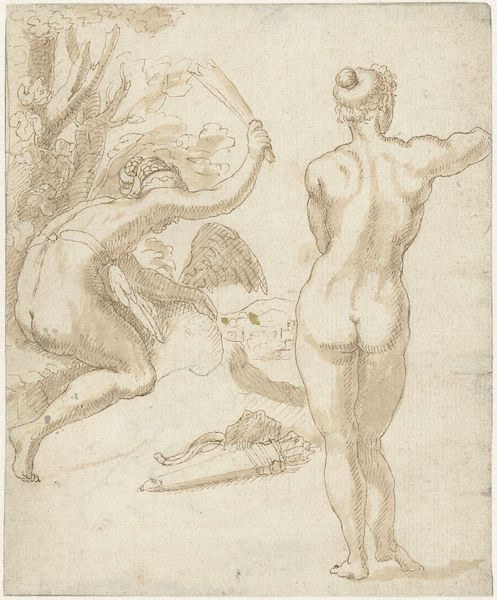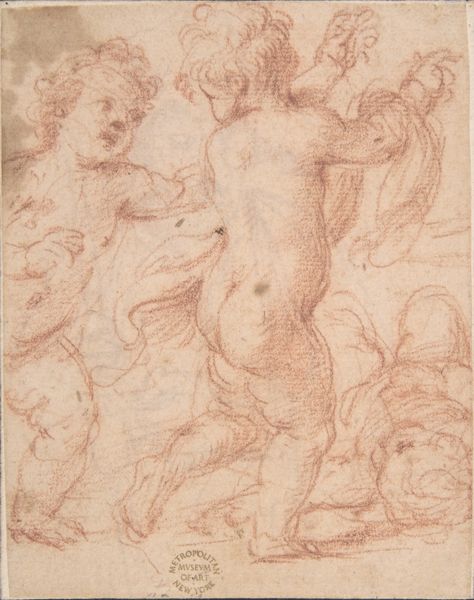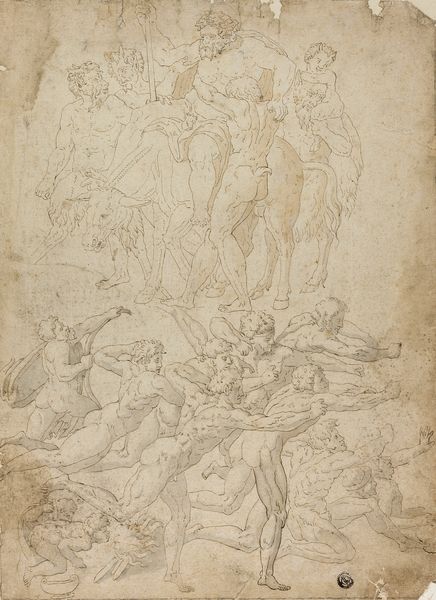
drawing, paper
#
drawing
#
figuration
#
paper
#
11_renaissance
#
history-painting
#
academic-art
#
italian-renaissance
Dimensions: height 153 mm, width 225 mm
Copyright: Rijks Museum: Open Domain
Curator: This is an intriguing drawing, entitled "Beelden en fresco," or "Statues and Fresco," made with pen and brown ink on paper, dating back to around 1550-1570. Though its maker is currently unknown, the piece resides here with us at the Rijksmuseum. What are your first impressions? Editor: My immediate thought is one of preparation, almost like looking over the shoulder of an artist planning a large-scale historical fresco. I see the human form explored repeatedly alongside various architectural adornments. There's a definite dynamism here. Curator: Yes, I agree. The dynamism emerges primarily through the contrast between the more static, sculptural studies and the implied movement within the cluster of figures engaged in what seems to be a struggle on the right-hand side. Consider also how the composition itself plays with positive and negative space, a method often seen in preparatory sketches. Editor: This evokes important historical debates. Think about what was considered historically important for a painter of this time. Here we can see the white, able-bodied male at the center of attention, the model from which every character springs, every god or hero. What’s included tells one story, what's omitted tells another. Where are the female figures of the time portrayed with equal strength? Curator: That's a compelling question to consider within its historical framework, but also from our present gaze. I'm interested in the way that the various styles coexist on the same plane, moving across the flat picture. The architectural elements serve to further fragment any clear spatial logic, focusing the eye instead on pure form. It anticipates a Cubist fragmentation, no? Editor: Perhaps so, yet the intention remains rooted in the Renaissance desire to revive classical antiquity and create an aesthetic centered around men. Seeing it, analyzing it – this can inform how we challenge ingrained ideas about heroism and artistic authority and explore what it means to see diverse characters reflected in art history. Curator: Thank you for highlighting the piece's historical framework. It highlights precisely how an artistic blueprint echoes within time. Editor: Likewise. Considering it with new perspective helps reveal who was rendered invisible at the time, inspiring further critical explorations.
Comments
No comments
Be the first to comment and join the conversation on the ultimate creative platform.

